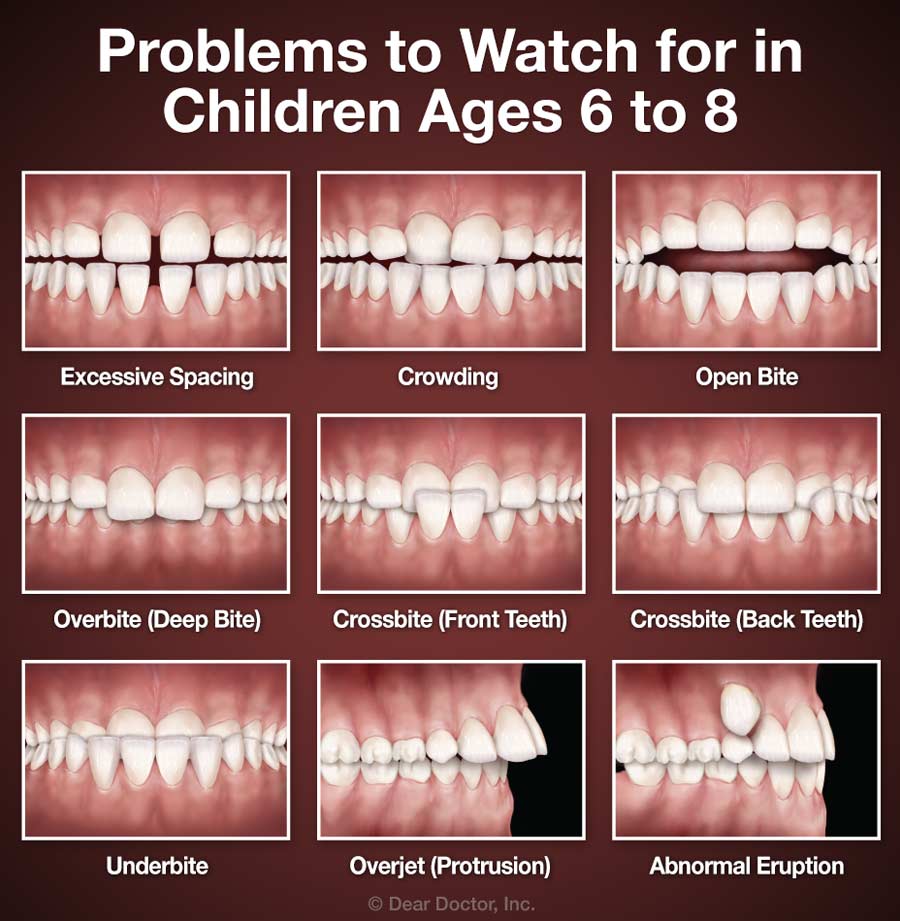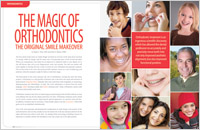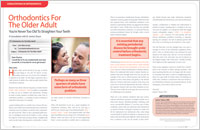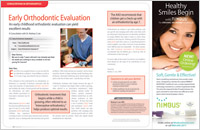If you've been thinking about orthodontic treatment for yourself or someone you care about, you may be wondering: When is the right time to see an orthodontist? It's an excellent question, and there are several ways to answer it.
The most basic one is this: You should see an orthodontist any time you have a question about the alignment of your teeth, or the quality of your bite. Sometimes, a problem in this area is painfully obvious. For example, you may have difficulty biting, chewing or speaking, or some of your teeth may be clearly protruding, crowded or misplaced. If that's the case, then it's time to consult with our office — an orthodontist has the special skills and training needed to diagnose and treat the problem.
Other conditions may not be as clear cut. Mouth breathing, clenching or grinding your teeth, and the inability to comfortably close your lips may be signs that orthodontic treatment is needed. Likewise, if your jaws seem to frequently shift in position or make sounds as they move, or if you find you're unintentionally biting your cheek or the roof of your mouth, you may have an orthodontic issue.
Teeth that meet abnormally can even cause a facial imbalance (asymmetry), meaning that some facial features aren't in proportion with others. This is a problem that can often be corrected by orthodontic treatment.
Orthodontics for Children

In addition to these general guidelines, there are some specific recommendations for children. The American Academy of Orthodontists (AAO) recommends that your child have an orthodontic examination by age 7 — for two very good reasons.
One stems from the fact that there's a wide disparity in tooth development at that age — so it takes an expert to tell if a child may actually have an orthodontic problem, or if it's just a normal developmental variation. By that time, an orthodontist can usually determine whether or not there will be adequate room in the mouth to accommodate the permanent teeth.
The second reason for an early exam is that many conditions are far easier to treat if they're caught at an early stage, when children's natural growth processes are in full swing. For example, a palatal expander appliance can effectively treat a child's crossbite (a condition where the upper teeth close inside the lower ones) because a youngster's jaw is still growing rapidly. However, if left untreated, oral surgery could later be required to correct this serious condition.
There are other problems commonly seen in childhood that may also benefit from orthodontic treatment. These include the early or late loss of baby teeth, persistent thumb sucking, tongue thrusting and mouth breathing. If you notice any of these symptoms, it may be time to visit our office. But keep in mind that early screening doesn't mean treatment has to start right away — In fact, most kids don't begin active orthodontic treatment until they're 9-14 years old.
Orthodontics for Adults
You know when your child should come in for an orthodontic exam. Now, how about you? Do you cover your mouth with your hand when you smile? Are you self-conscious around strangers because your smile isn't as perfect as you want it to be? If so then the best time to see an orthodontist might be — right now!
Maybe you think orthodontics is just for kids. If so, then it's time to think again! In fact, according to the AAO, around one in five orthodontic patients today is an adult. Why are more adults getting orthodontic treatment? There are plenty of reasons.
Orthodontic treatment can be successful at any age — and in older patients, compliance isn't usually an issue. Plus, with the growing availability of clear aligners, translucent ceramic brackets, and lingual braces, it's getting harder to tell whether or not you're wearing orthodontic appliances. So if you worry that metal braces might clash with your professional image, be sure to ask about less-visible alternatives.
Of course, it isn't just about looks. Well-aligned teeth are easier to clean and maintain, and less subject to abnormal wear. A better bite keeps you from having trouble eating and speaking, and helps your teeth stay healthy — and healthy teeth can last a lifetime. So why delay getting orthodontic treatment?
Related Articles

The Magic of Orthodontics Proper alignment of the teeth is basic to "Smile Design." Their position dictates how they work together and affects the way you look and smile. Only orthodontic treatment can move teeth into the right position. Simply put, when things look right, they probably are right. Learn the basics of smile analysis and design and whether the magic of orthodontics will work for you... Read Article

Orthodontics for the Older Adult Healthy teeth can be moved at any age, so there's no such thing as "too old" for braces. In fact, nowadays about one out of every five orthodontic patients is an adult. Yet this figure represents only a small portion of adults who could actually benefit from orthodontic treatment... Read Article

Early Orthodontic Evaluation Early detection of orthodontic problems in young children may make it easier to correct those problems in the long run. Waiting until all of the permanent (adult) teeth have come in, or until facial growth is nearly complete, may make correction of some problems more difficult or even impossible. An early childhood orthodontic evaluation can yield excellent results... Read Article


